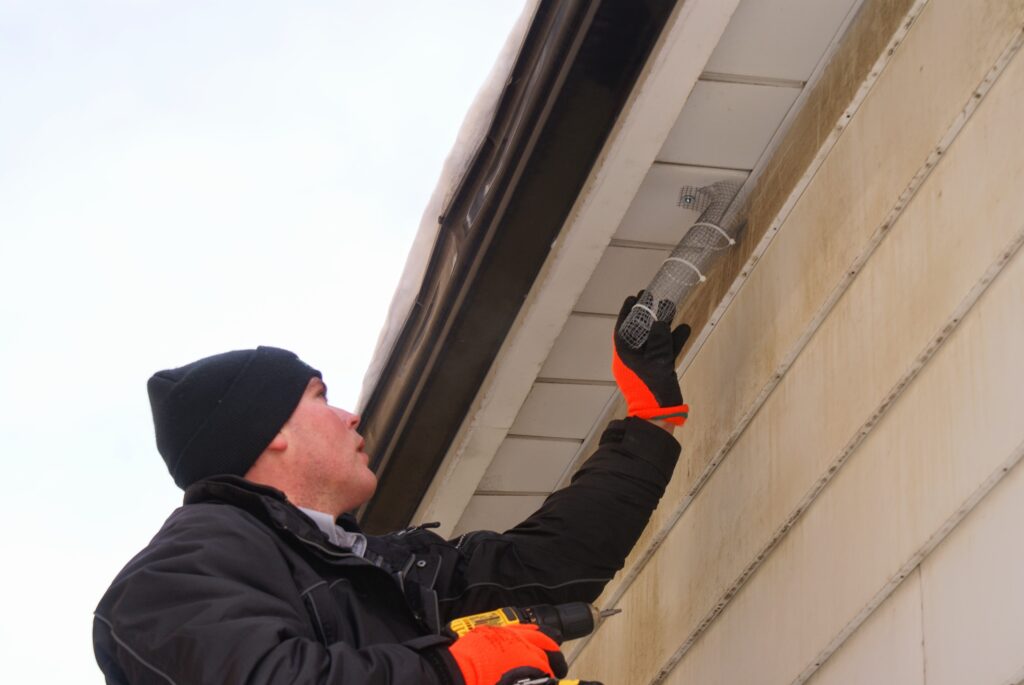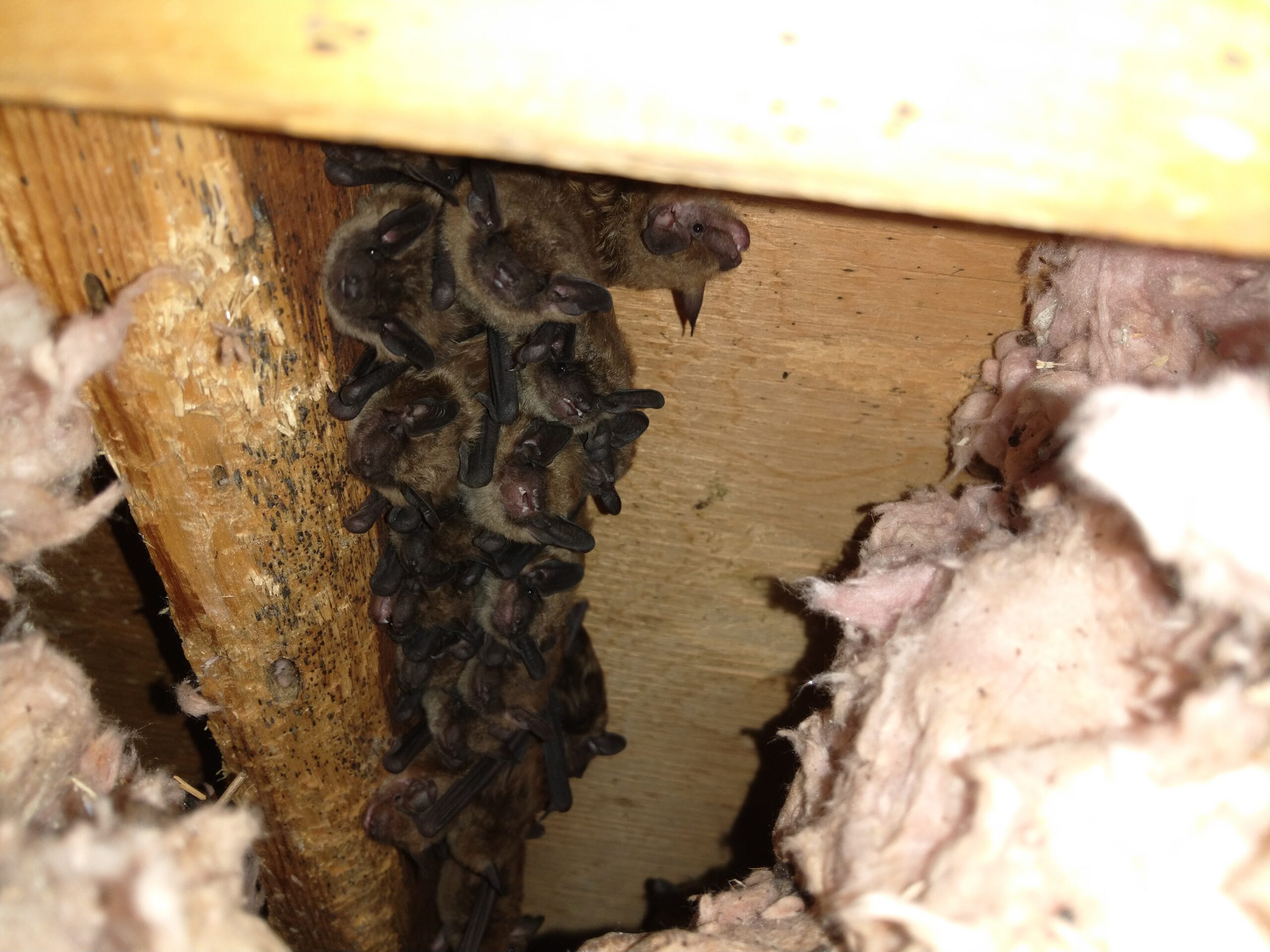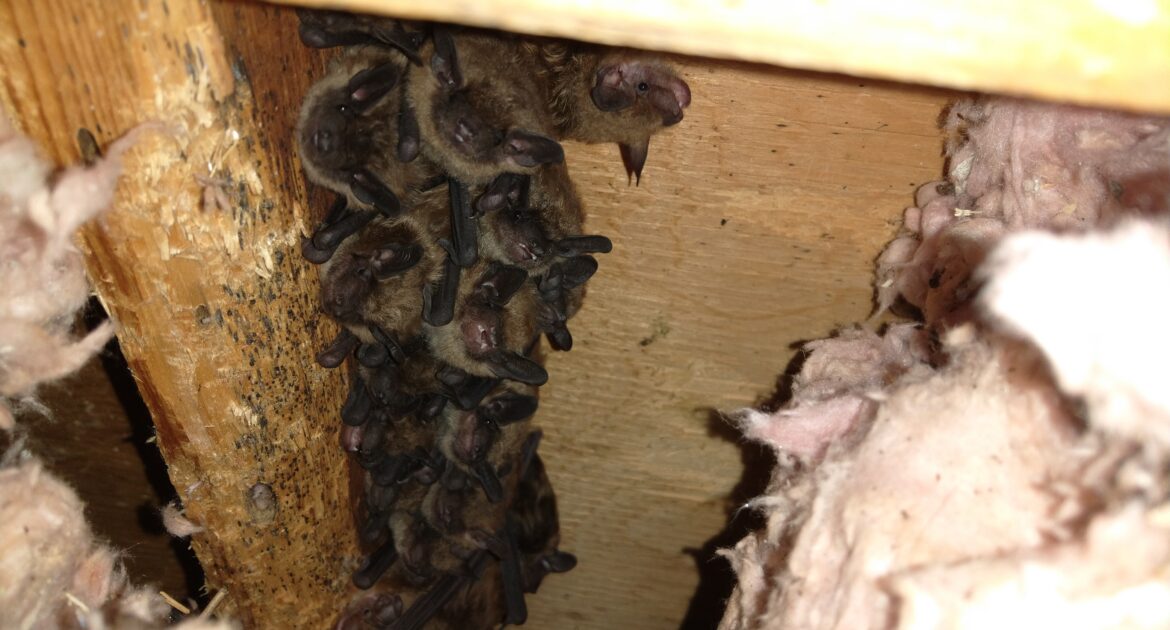As winter approaches, many homeowners may worry about the possibility of bats invading their homes. While these nocturnal creatures can be beneficial to the environment by eating insects, they’re definitely not welcome visitors inside the house. However, did you know that many of the myths surrounding bats and their winter behavior are actually completely false?
In this blog post, our experts at Skedaddle Humane Wildlife Control will be debunking some of the most common misconceptions about bats during the winter months. We’ll share some surprising facts about their hibernation habits and provide valuable information on how to keep them out of the house. So if you’re looking for reliable advice on bat removal in Calvert County and how to protect your property from these winged mammals, keep reading!
Winter Behavior: What You Need To Know
So, let’s continue our exploration into the winter habits of our winged friends. One common misconception that people often have is that bats like to ride out the cold season in the warmth and shelter of our homes. While these mammals certainly value warm, cozy spaces, it’s not quite accurate to say they’re all headed for your attic when winter arrives.
Debunking the Myth: Bats in Your Attic
Bats don’t hibernate inside houses during winter as many seem to believe. Instead, only a small percentage of them will seek out human structures for shelter. A majority of them prefer to hibernate in cave-like environments and other natural locations that offer protection from predators and the elements.
Do All Bats Hibernate? Not Exactly…
Furthermore, let’s debunk another widespread myth – that all hibernate. In reality, many do not hibernate but instead go through a process called torpor. This state is similar to hibernation, but it only lasts for short periods, allowing them to save energy while still being able to wake up quickly in response to threats or changes in weather.
- Torpor: Reduces their metabolic rate, lowers their body temperature, and slows their heart rate to save energy. Unlike hibernation, torpor is not a deep sleep, and they can wake up quickly if disturbed.
- Hibernation: Not all hibernate, but those that do will use stored fat for energy and can remain in this state for weeks or even months at a time. During hibernation, they are not easily roused.
The Winter Migration: Friends in Flight
You might also marvel at whether they migrate during winter—the answer is, again, not as straightforward as you might imagine. Many don’t migrate, but certain species, particularly those living in colder climates, fly thousands of miles to warmer areas. The journey, though taxing, allows them to find plentiful food sources unavailable in snowy regions.
It’s clear that the world of bats is far more intricate and diverse than many people realize. Their winter habits, too, are no exception—adding yet another layer of intrigue to these often misunderstood creatures.
Signs Of Bat Infestation
Unchecked infestations can lead to significant damage, but many people still don’t know what signs to look for. Bats are quite secretive and typically only active at night, making it hard to spot when they’ve decided to bunk in your belfry.
Unexpected Sounds
You might first become aware of a problem due to unusual sounds around your home. Bats often emit a chittering squeak, especially in the early morning and just after dusk. In winter, when just about everything goes quiet, these sounds can become quite pronounced.
Damages
Damage to attic insulation, or an accumulation of dark, powdery droppings could point towards an infestation.
Spotting Bat Guano
Despite its unpleasant associations, guano (droppings) is usually a surefire indicator of an infestation. Unlike other droppings, bat guano is generally pellet-like, shiny, and contains tiny specks due to diet.
Drafts Coming from Unknown Sources
Feeling a chill on the back of your neck? There may be a small hole somewhere in your home. Bats can squeeze themselves through even the tiniest of openings, and these minuscule portals can create unexpected drafts in your home.
Identifying that you’ve got an unwanted guest isn’t as spooky as you might expect. Remember, if you’re unsure, it’s always best to contact a professional wildlife control expert at Skedaddle to inspect your property.
How To Keep Bats Out Of The House
Now that we’ve debunked some common misconceptions, it’s time to protect your home from these fascinating yet potentially unwanted guests. Here, we aim to provide you with a range of preventive measures to help keep bats out of your living space this winter.
Inspect the House Exterior
Start by thoroughly inspecting the exterior of your house. These animals usually don’t need much: a tiny crack or hole, barely a half-inch wide, is often more than enough to grant them access. Pay close attention to the soffit and fascia boards, chimneys, vents, windows, doors and roofing materials, which can sometimes loosen or deteriorate over time. You might want to consider doing this at dusk when they are most likely to emerge.
Seal Any Potential Entry Points
Once any potential access points have been found, securing them is the next vital step. It is paramount to seal off such entry points using durable materials like caulk, high-quality weather stripping, heavy-duty nets, or metal flashing to keep bats away. Keep in mind that it requires a professional’s touch to seal these areas without trapping them inside, so it’s best to consult with a wildlife expert before proceeding.
Proper Lighting
Bats gravitate towards dark, quiet spaces. Therefore, installing bright lights in attics, basements or other potential roosting spots can make these areas less appealing to them. Please remember to choose LED or other energy-efficient options to minimize energy consumption.
By following these preventative measures, keeping them out of your home this winter can be a far less daunting task. However, if you are facing a severe infestation, remember that it’s always safe and advisable to engage the services of wildlife control experts.
When To Call The Experts At Skedaddle For Wildlife Removal In Calvert County
Understanding when to contact a professional wildlife control service is the key to maintaining a safe and comfortable home for you and your family. Let’s discuss some scenarios when the expert intervention from Skedaddle for bat removal in Calvert County becomes necessary.
You’ve Tried DIY Solutions without Success
Have you done everything from sealing entry points to using natural deterrents and still have a resident population of bats? If your efforts have been fruitless, it’s time to call in the professionals. There’s no shame in admitting you need help – the safety of your home is too important to risk.
There’s a Large Colony in Your Home
If you’ve discovered a large colony living in your residential space, especially during winter months when bats could be hibernating, it’s crucial to seek professional help. Large colonies can be more difficult and dangerous to handle without the proper skills and experience.
Accumulation of Guano Is Damaging Your Property
If you notice an accumulation of guano in your attic or other areas of your home, that’s a strong sign of a large population. Guano can have corrosive effects on building materials and potentially lead to structural damage if not addressed promptly.
Moreover, it’s crucial to consider that prolonged exposure to guano can have health consequences due to the fungal spores it contains. In these scenarios, it’s not just about removing the bats but also conducting a thorough clean-up, which is best left to professionals.
At Skedaddle, we understand the unique nature of every problem and tailor solutions to ensure your home becomes and remains wildlife-free. With widespread experience in wildlife animal control, we stand with you in keeping your home safe and comfortable, especially during these chilly winter months.

Contact Calvert County’s Trusted Wildlife Control Experts
Don’t let bat-related myths leave you in the cold. Save your home, health, and peace of mind with professional wildlife control. Schedule an inspection with Skedaddle Maryland today. Remember, when it comes to wildlife control, we’ve got you covered.




